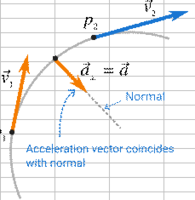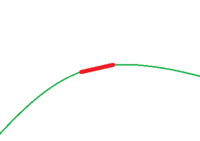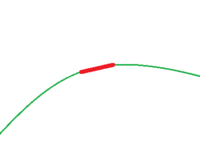markraz
Full Member
- Joined
- Feb 19, 2014
- Messages
- 338
Hi, I have a couple questions regarding Acceleration Vectors. An Acceleration Vector is supposedly the first derivative of a position vector (is that right??)
This picture says that the Acceleration Vector is the normal at a given point??
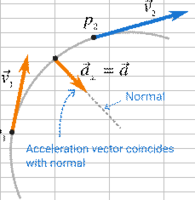
So my question is, if i zoomed in really really close on a curve (green) and selected 2 points close together and drew a line segment between the points (red)
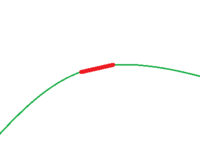
then I draw a line perpendicular to the red line (the blue line). Would the blue line be in the same direction as the Acceleration Vector??

thanks in advance
This picture says that the Acceleration Vector is the normal at a given point??

So my question is, if i zoomed in really really close on a curve (green) and selected 2 points close together and drew a line segment between the points (red)

then I draw a line perpendicular to the red line (the blue line). Would the blue line be in the same direction as the Acceleration Vector??

thanks in advance
Attachments
Last edited:

